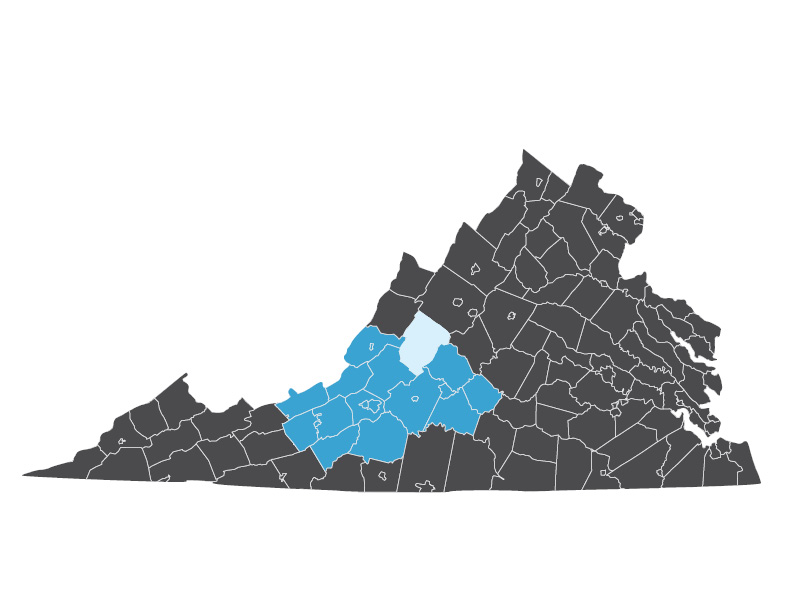Executive Summary
The Blue Ridge Partnership for Health Science Careers (the Partnership) received a $100,000 capacity building grant from GO Virginia to support the establishment of a coordinated, sustainable approach to developing health science careers in the region. GO Virginia is a bipartisan, business-led economic development initiative that supports programs to create more high-paying jobs through incentivized collaboration between business, education, and government to diversify and strengthen the economy in every region of the Commonwealth. GO Virginia has defined nine regions in the Commonwealth that are geographically similar and share similar economic development and workforce needs. The Partnership operates in GO Virginia Region 2. (Geographic list provided on page 5.)
The Partnership utilized GO Virginia grant funds to establish the Blue Ridge Partnership Executive Committee and Task Force working groups, conduct a situational assessment and workforce demand analysis, research best practices in health science workforce development, identify existing resources, engage major stakeholders, and develop an informational website and document storage platform. The Partnership engaged the Mason Center for Health Workforce at George Mason University to provide the data and analysis which helped to inform this work.
The project faced challenges due to the COVID-19 pandemic, leading to adjustments in the original goals. However, these unforeseen circumstances also provided new opportunities to address critical health workforce shortages impacting health care providers, academic institutions, employer hiring needs, and evolving job expectations in the Region. Despite the challenges, the Partnership successfully built capacity by creating an organizational model that fosters volunteer collaboration between employers, educators, workforce organizations, and economic development professionals. Together, the coalition successfully addressed the Region’s workforce demands by developing tools and processes to provide crucial workforce information to employers and academic institutions from K-12 through post-graduate and facilitating access for students to explore careers in the Life Science and Health industry cluster.
The model that has been created can be scaled and replicated in other GO Virginia regions. For example, the Partnership is actively assisting leaders in GO Virginia Region 3 to establish the Southern Virginia Partnership for Health Science Careers. The model can also be applied to workforce development efforts in other Region 2 industry clusters such as manufacturing, IT, and transportation.
This report highlights the Partnership’s achievements with the grant funding and outlines future plans for life science and health workforce development in GO Virginia Region 2. Through ongoing efforts, the Partnership aims to continue its vital role in bridging the gap between employers’ needs and educational resources.
